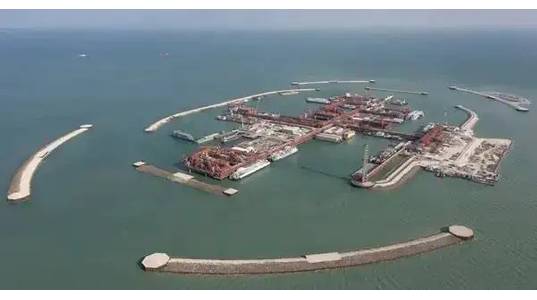
Kazakhstan's Energy Minister Almasadam Satkaliyev said on Tuesday that the central Asian country is pressing ahead with $16.5 billion in claims against international oil companies over disputed project costs.
The new claims are the latest in a string of disputes and settlements in recent years which saw international firms cede control in fields to the state or reach cash settlements.
Kazakhstan produced around 1.75 million barrels per day (bpd) in 2022, roughly 1.75% of global demand and generating about $60 billion in sales, based on average benchmark crude prices.
Following are details on Kazakhstan's main oil fields and pipelines and the main disputes and settlements since the late 2000s.
KASHAGAN
The giant offshore field in the north Caspian sea was discovered in 2000 and remains one of the biggest discoveries in recent decades, as well as one of the costliest. Oil production started in 2013.
The field produced around 255,000 barrels per day (bpd) in 2022, significantly lower than its nameplate capacity of 400,000 bpd as a result of a gas leak. (https://interfax.com/newsroom/top-stories/86790/)
Its development plans aim to increase output capacity to 450,000 bpd.
Kashagan is operated by the North Caspian Operating Company (NCOC) that includes Eni (16.81% stake), Shell (16.81%), TotalEnergies (16.81%), ExxonMobil (16.81%), KazMunayGas (16.88%), Inpex (7.56%) and China National Petroleum Corp CNPC.UL (8.33%).
KARACHAGANAK
The Karachaganak gas-condensate field was discovered in 1979 and is located in north-west Kazakhstan, covering an area of more than 280 square kilometres. Production started in 1984.
The field is operated by the Karachaganak Petroleum Operating (KPO) consortium which includes Eni (29.25%), Shell (29.25%), Chevron (18%), Lukoil (13.5%) and KazMunaiGas (10%)
Oil production reached around 227,000 bpd in 2022.
TENGIZCHEVROIL
The Chevron-led Tengizchevroil (TCO) consortium operates the Tengiz and Korolev fields. Tengiz, Kazakhstan's largest oilfield and one of the world's deepest, was discovered in 1979.
Chevron holds a 50% stake in TCO, while KazMunayGas has 20%, Exxon 25% and Lukoil 5%.
It produced around 610,000 bpd in 2022
The Tengiz field is currently undergoing a major expansion project that will see its ouptut increase to 850,000 bpd. The first phase of expansion is expected to be completed this year.
CPC
More than 80% of Kazakhstan's crude is exported via the 935 mile (1,500 km) Caspian Pipeline Consortium oil pipeline linking TCO, Karachaganak and other fields to the Russian port of Yuzhnaya Ozereyevka, close to Novorossiisk, which supplies around 1.2% of global oil demand.
The main shareholders in CPC are Russian pipeline operator Transneft TRNF_p.MM with a 24% stake, Kazakhstan's KazMunayGas with 19%, and the Chevron Caspian Pipeline Consortium Company with 15%.
DISPUTES AND SETTLEMENTS
In 2020, Kazakhstan reached a $1.9 billion settlement with the Karachaganak partners that brought to an end a years-long dispute over profits sharing from the giant field. (https://www.curtis.com/our-firm/news/kazakhstan-secures-us-1-9-billion-in-settlement-of-arbitral-dispute)
In 2012, partenrs in the Kashagan consortium agreed to cover $1 billion in Kazakh state energy company KazMunayGaz's extra costs to settle a dispute over the project.
A year earlier, the consortium of the Karachaganak field led by Eni agreed to hand the Kazakh government a 10% stake in the field, valued at $1 billion, as part of a dispute resolution.
It is harder to put a value on other concessions won in Kazakhstan's legal wranglings, such as the addition of some long-term payments, obligations to sell gas to a state entity or non-reimbursement of some historic costs.
In 2008, Kazakhstan doubled its stake in Kashagan to 16.8% as part of a settlement with oil majors over delays in development of the field.
(Reuters - Reporting by Ron Bousso; Editing by Kim Coghill)



